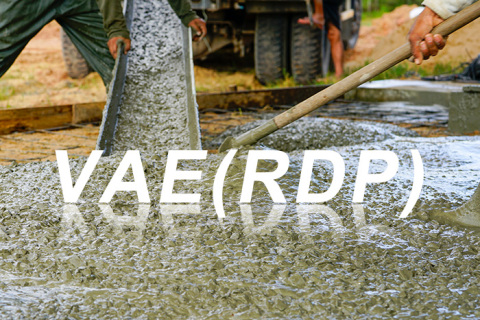
- Home
- >
News
Polyvinyl Chloride (PVC) Paste Resin is a high-performance polymer widely used in modern construction materials. Its excellent film-forming ability, adhesion, and chemical stability make it ideal for applications in coatings, adhesives, plasters, and waterproofing systems. PVC Paste Resin helps manufacturers produce durable, weather-resistant, and high-performance building materials for both residential and commercial construction.
VAE Redispersible Polymer Powder (RDP) is one of the most important polymer binders in today’s dry-mix mortar formulations. Its excellent redispersibility, strong film-forming capability, and superior modification performance make VAE RDP essential for improving flexibility, adhesion strength, and durability across a wide range of construction applications.
In an industry where moisture silently undermines strength—from micro-capillary channels to surface carbonation—SHP acts like a quiet architectural “umbrella,” forming a stable, inward-facing shield that strengthens the integrity of the entire system.
Redispersible Polymer Powder (RDP) is a multifunctional polymer additive widely used in modern dry-mix mortar systems. Through its exceptional redispersion ability, film-forming behavior, flexibility enhancement, and bonding improvement, RDP has become indispensable in tile adhesives, wall putty, ETICS mortars, repair compounds, and self-leveling flooring systems. This article provides a technical overview of RDP’s functional mechanisms and its contribution to high-performance construction materials.
Hydroxypropyl Methyl Cellulose (HPMC) is a high-performance cellulose ether widely used in dry-mix mortar formulations. Its multifunctional role in water retention, workability enhancement, thickening behavior, and open time extension makes HPMC one of the indispensable additives in today’s construction materials. This article explains the technical mechanisms of HPMC and its contribution to consistent mortar performance and long-term durability.
Polycarboxylate Superplasticizer Powder (PCE Powder) is a new-generation water-reducing agent developed for high-performance dry-mix mortar applications such as self-leveling compounds, tile adhesives, grouts, and repair mortars.
In modern flooring systems, self-leveling mortar is widely used to create smooth, flat, and high-strength substrates. To meet the growing demand for fast installation, stable performance, and long-term durability, lithium carbonate self-leveling mortar has become an important formulation trend. Lithium carbonate offers strong chemical reactivity in cement-based systems, making it valuable for improving setting speed, flowability, overall workability, and floor durability.
In modern construction, movement in structures and materials—whether due to thermal expansion/contraction, wind vibration, or foundation settlement—is inevitable and poses a cracking risk to traditional rigid mortars and concrete. To achieve long-term stability and crack resistance in finishing systems, materials must possess "flexibility." Redispersible Polymer Powder (RDP), especially the RDP based on polymers like VAE, is the critical polymer additive that provides dry-mix mortars with this essential high flexibility and crack resistance.
In modern building exterior wall systems, External Wall Insulation Mortars (EWIM) and Skim Coats are critical for ensuring both the thermal performance and aesthetic finish of the system. However, whether it's a thick layer of insulation mortar or a thin layer of skim coat, efficient application on vertical surfaces demands extremely high standards for the material's workability and sag resistance. Hydroxypropyl Methyl Cellulose (HPMC), an indispensable polymer additive, is the secret weapon for achieving these crucial rheological properties.
In modern dry-mix mortar formulas, relying solely on cement and aggregates is no longer sufficient to meet the demands for high-performance construction materials. Mortars need stronger bonding strength, better flexibility, and greater durability. Redispersible Polymer Powder (RDP), especially products based on VAE copolymers, is the key admixture that was born to solve these challenges. It can transform dry-mix mortar from a basic binder into a more comprehensive and functional construction material.
However, ensuring the stability and reliability of mortar performance is always a challenge due to factors like varying job site conditions, temperature, and inconsistent raw material batches.
In a competitive market, producing high-quality dry-mix mortar requires overcoming numerous challenges. The most critical is how to ensure the performance of your dry-mix mortar is both stable and excellent, while maintaining cost-effectiveness. This is especially true when facing raw material variations and strict end-user demands for superior workability and reliable final products.












